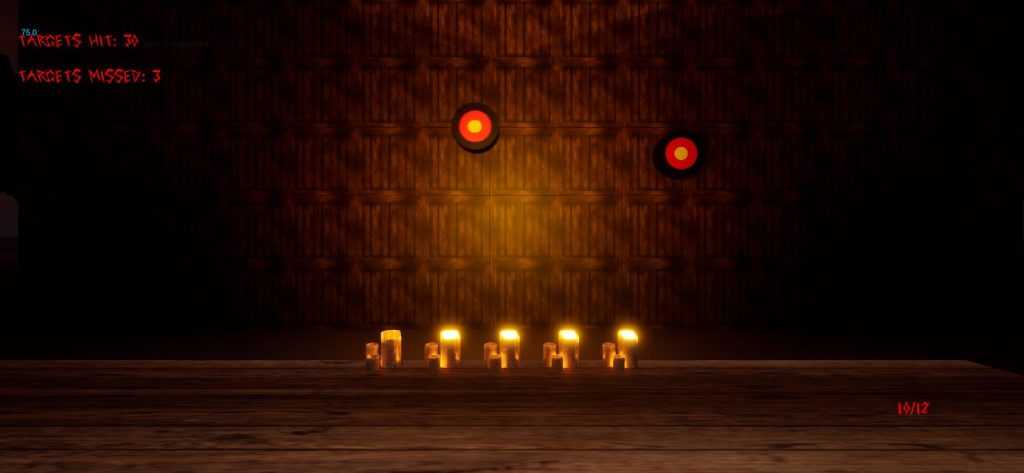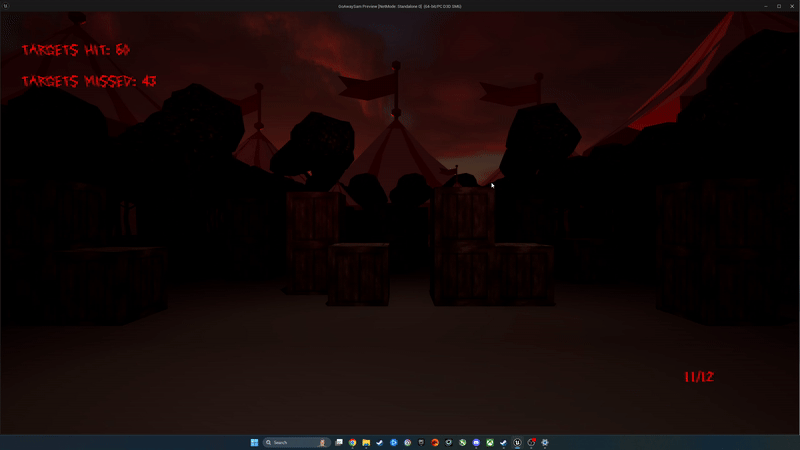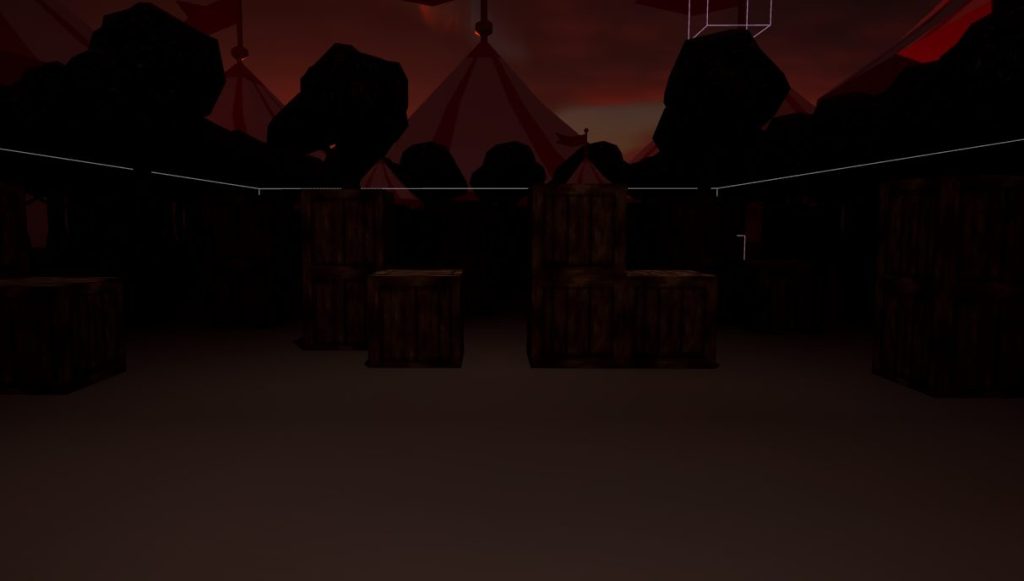
This game was created for a one-week horror game jam, where it was selected a runner-up. I worked with a game designer to create this short and effective horror experience. My role was to bring the game designer’s ideas to life by working with Unreal Engine 5 to code the game.
The game has a simple concept. You use the mouse to aim and fire projectiles at targets. Five candles light up in front of them, and they need to stay lit by hitting targets, as missing too many will lead to a game over. The player has to balance hitting targets while also checking their back, otherwise they might get caught by the clown lurking in the shadows behind!


Every so often, sounds play behind the player to “encourage” them to turn around. Sometimes, they might even spot the clown behind them. Sam attacks the player by slowly creeping up behind them. If he reaches the player, it is game over!
Building Tension
The main aim of this game jam was to build tension, so it was an interesting challenge to play with the player’s perception and make them believe they were in danger. To achieve this meant using sound, space and time effectively, to fool the player into thinking they were in danger.

Playing sound clips to set the tone helps to send a message that something is not right. We used carnival music at the start when all the player needs to do is hit targets, but once the candles turn on, the music fades into a quiet hum, with wind sounds.
Removing the music increases the tension. We also use various sounds behind the player to provide them with an incentive to turn around, even if there is nothing there, including heavy breathing which moves between their ears, creating an uncomfortable stereo effect.

Sam also has two types of operation. One is to walk directly up to the player and attack. The other is to walk between boxes behind the player. This version is Sam is triggered before an attack, so players can catch a glimpse of what is coming.
Managing sam

Sam is the main antagonist for this game. Managing how to use Sam was an interesting process. You can’t just make Sam appear straight away, as there is no tension. But you can hint that something is there. The attack is delayed, upping the sense of danger.
Sam skulks in the background, allowing the player to catch glimpses, but after a certain amount of time Sam will attack. The player must shoot to make Sam run back into the darkness. Now the player has a brief respite, before Sam attacks again.
Managing Difficulty

To keep the tension high, the difficulty of the game is scaled by time progressed. Firstly, the targets get harder to hit over time, which increases the amount of focus needed from the player, while the threat coming from behind becomes imminent. This is achieved by adding modifiers to the targets at certain time intervals, making them move and changing their size. I wanted the clown to get more difficult to deal with too, so I linked the spawn rate of Sam with the number of missed targets, meaning that the more targets the players misses, the faster Sam spawns!
Things I Would Improve
I feel this project went well and I managed to achieve most of the project goals in a limited amount of time, but there are a few things I would improve. After the first minute, the candles turn on and the player is required to hit targets to survive, but if they are unable to do this then the game ends with a jump-scare, giving the player an inferior experience . I would improve this by moving the requirement to hit targets to later on in the game, which would improve the player’s survival and their experience of the game.
Once once the player gets to the game’s latter stages, Sam can become quite predictable. Reducing Sam’s spawn timers via misses was supposed to give players a reason not to miss, but in practice, if the player misses enough times, it removes Sam’s spawn timer entirely, so the clown keeps appearing as soon as it is hit. This could have been fixed by randomising the spawn interval, instead of tying it to the number of targets missed.
Experience Gained
With each game jam, I feel my skills in problem-solving become better. I understood how to take a concept and make it work in the engine, creating and optimising code within a short amount of time. I found that my coding had improved, because I didn’t have spend too much time bug fixing.
